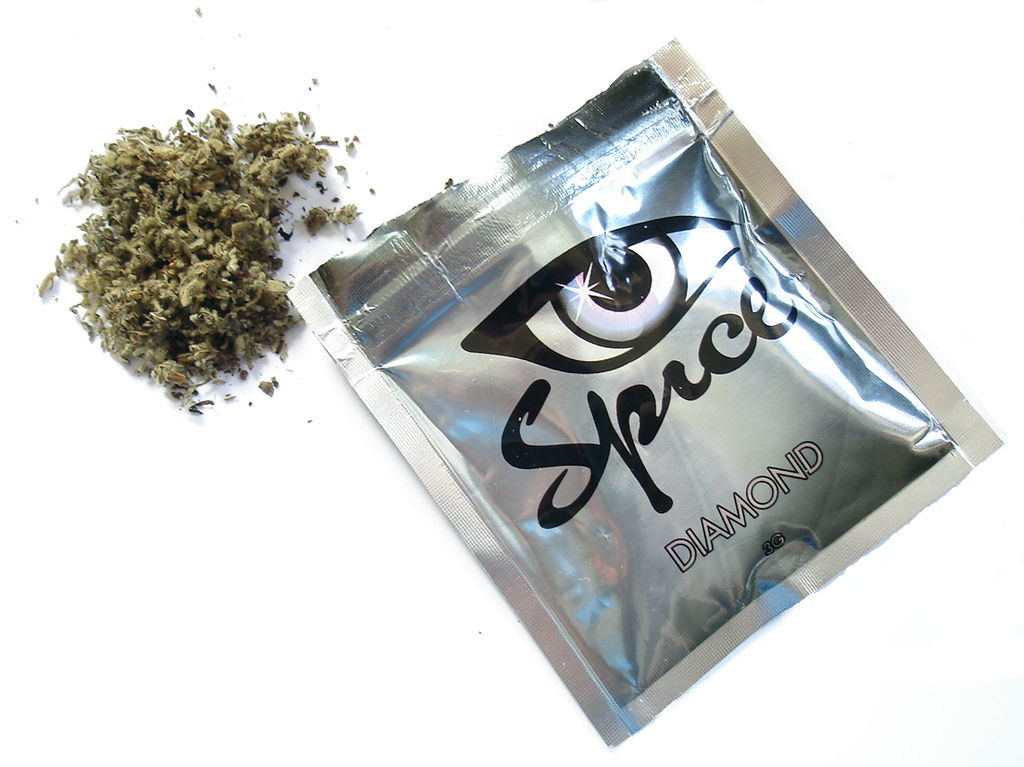The line “times they are a changin’,” as Bob Dylan sang in 1964, describes the state of cannabis research aptly. As cannabis and related products are becoming increasingly accepted or legalized around the world, it has opened doors for researching the drug and it’s many variants and effects. Studies on the psychological, behavioral, and physical effects of smoking marijuana are being conducted in increasing numbers, but little is known about the effects of smoking synthetic cannabinoid products such as Spice or K2. These are herbal blends spiked with molecules that are similar to the active ingredient in marijuana, THC. These molecules are not THC, have no known medical uses, but are either structurally similar or otherwise known to elicit a similar experience when smoked. Their legality is also questionable.
Researchers from Germany and The Netherlands collaborated on a study to test the effects of the active ingredient of Spice, JWH-018, in 17 “experienced’’ cannabis users. “Experience” was defined as using cannabis for a minimum of 1 year, and between 24-104 times per year. These 10 females and 7 males (ages 18-28) also had to be in good health, average weight, not pregnant or an excessive drinker, and without a history of psychiatric disorders or drug abuse.
JWH-018 powder was purchased from a company called THC Pharm and mixed with a hemp-scented blend of herbs called Knaster Hemp. This mixture was heated in the bowl of a glass pipe for 15 seconds, and each participant inhaled as they normally would. One group received exactly 2 mg of the JWH-018, and one group received a body-weight adjusted dose averaging at around 3.95 mg per person. Various measurements of subjective experience (how high do you feel?) and objective behaviors (how well do you perform on a test?) were taken at three time points: 1) within the first hour, 2) between 1 and 6 hours and 3) between 16 and 30 days after inhaling.
Participants were asked to rate how high they felt on a scale of 1-10 about 5 minutes after inhaling. The researchers then conducted cognitive performance tests, including a critical tracking test that measures how easily you are distracted, a divided attention task, a test of reaction time, a spatial memory test, and a puzzle game called Tower of London that measures “executive functioning” such as planning ahead. Vital signs were monitored during the smoking part of the test, and numerous blood samples were taken to determine the amount of JWH-018 that was in each person’s bloodstream over time. They also had chemical analyses performed of the used pipes to determine how much of the active ingredient was left behind as a measure of how much the person actually inhaled.
Unsurprisingly, the researchers found a connection between how much JWH-018 a person inhaled with their subjective experience of being “high” and their blood levels of the drug. Up to 70% of the drug was left behind on the pipes for some of the participants, with wide variation. Further, half of the participants reported their subjective high being greater than a 2/10 and the rest were below. The “below 2” group left behind an average of 68% of the drug, and the “above 2” group left behind an average 46% of the drug.
In other words, how “good” you are at smoking does in fact have an impact on how the drug affects you. While this may not be the best news, it does seem from this study that the group rating above a 2 on the subjective high did have slower reaction times, critical tracking scores, and poorer spatial memory scores within the first hour of inhaling. However, scores improved with time. Researchers noted that “dissociative symptoms such as feelings of amnesia, derealization, and depersonalization” were greater in those rating themselves above a 2 as well.
The authors described a pilot study they performed prior to this one where doses of 2-3 mg achieved effects similar to 15 mg of THC. So, it seems that “Spice” may be up to 5 times more potent. The study authors also noted that deaths have unfortunately been associated with these molecules, where doses as high as 199 nanograms per milliliter (ng/mL) were found in the blood of deceased patients. By comparison, blood levels identified in this study were between 4-10 ng/mL. While these results may not be at all surprising to experienced marijuana users, it does offer some insight into the dose of these synthetic cannabinoid products required to achieve effects similar to marijuana and approximately how close a typical “hit” of these synthetic compounds comes to achieving dangerous blood levels. The safety of synthetic THC is debated, so it is critical to back up claims with studies. It also provides data for medical providers to refer to when they encounter patients who have used these products.


